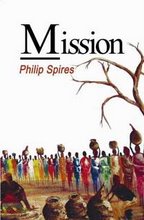The Witch of Portobello is a novel by Paulo Coelho. Perhaps already there is already a divide. There are readers, many of them, for whom the author conjures a world of another universe, perhaps, where, inside the unknown but knowable self, anything can be discovered. Equally, there is another group for whom this platitudinous pseudo-religious self-discovery approaches the nauseous. First, the bones of plot.
Sherine Khalil was abandoned at birth by her Romanian gypsy mother, at least partially because her father was a foreigner. Whether these origins, a rejection born of a persecuted minority in a context of political oppression are relevant is an academic question, because we spend so much time inside Sherine‘s head, albeit from outside, that we often lose sight of any wider context.
Thus abandoned, the baby girl is adopted by a middle-class Lebanese couple and brought up amid the political turmoil of the Middle East in general and Lebanon’s war in particular. Neither scenario is examined in the book, though they are cited as possible influences on Sherine’s development, though specific consequences seem not to figure. Sherine renames herself Aurora, is brought up a Christian and has visions.
Aurora goes to London and university to study engineering, but drops out, marries and has a child, because she realizes that is what she really wants. The marriage breaks down and she attains the status of a single mother, a status she seems to claim as an act of martyrdom. She does several things to make ends meet before becoming an estate agent in Dubai, an activity that proves lucrative.
But throughout, there is a side to Aurora-Sherine‘s personality that is not of this material world. She associates with the Virgin Mary, the mother, and with Santa Sophia and other phenomena. By the way, we can always tell if an emergent concept is both real and transcendental because we may note it always has a capital - letter even in speech. I digress…
Aurora returns to London and becomes associated with an apparently blasphemous sect based in Portobello Road, though what she is selling, apparently, is not secondhand. Amidst all the navel gazing and self-realization via universal personal discovery, there is space for religious difference. Fingers are pointed. Accusations are made. Let’s leave it there.
Sherine-Aurora’s story is told by a series of people who knew her. Criticism of the work arises because these reminiscences by different people do not really offer the different perspectives that might be expected. None of these people for instance dismiss Aurora’s claims about herself out of hand. In some ways, they are all converts.
Personally, I have just used this form in my own novel, Eileen McHugh, a life remade, so perhaps I am over-conscious of the of its potential shortcomings. For me, however, these different testimonies to the life of Sherine-Aurora were just two consistent to convince a reader they might be the recollections of a varied group of people with different memories and interests.
I began by defining to apparently opposing reactions to Paulo Coelho‘s work. Obviously, I am in the latter group, so why might I choose to read this book? Well, I read it in Spanish as a way of developing my fluency in the language. Personally, it was a means to an end and, as such, the book delivered, its calculated simplicity of style and associated simplicity of language suiting my linguistic goals perfectly.
And,
in facilitating my personal goals in this way, this opening up new
possibilities for my own self-expression and discovery, it may just have
delivered on the message of self-realization I have apparently been keen to
dismiss. It becomes an illustration of whatever an artist may have intended in
creating a work, it is eventually what the recipient experiences that endures.
Perhaps there is always an element looking within when we experience our
universe.















